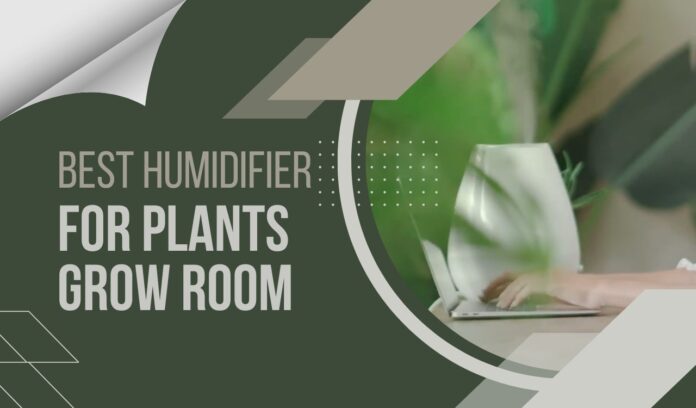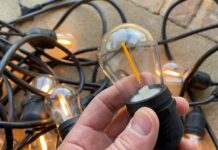Choosing the best humidifier for plants can be a daunting task. You may wonder if your plant needs one or which is the best for it
One factor making it hard to choose a suitable plant humidifier is the fact that most of them are made for humans.
There are several signs that show your plants need an improved humidity level.
The plant may start withering, or some may probably die. Sometimes the plant may present with a brownish leave tip and dead under leaves.
However, some weather conditions like winter and summer are often synonymous with low humidity and high humidity
Which are not ideal for some plants.
What Is The Best Humidifier For Plants?
My pick for the best humidifier for plants goes to the Honeywell HCM350W Germ-Free Cool Mist Humidifier.
It can cover a large area. It is an evaporative humidifier, which allows it to self-regulate. The unit also has a UV technology that helps kill up to 99.9% of bacteria in the tank water.
Why Do You Need a Humidifier For Plants?
Plants, just like Animals, are affected by a couple of environmental factors like water, food, air, and light. These factors are necessary for growth and production.
One such environmental factor that is least discussed and often overlooked is the humidity of the environment in which the plant grows.
Humidity plays a vital role in the growth and survival of a plant.
Choosing a humidifier is always influenced by recommendations from folks since many assume it’s just another house appliance. But are they the right guys to meet?
This article will offer you well-informed recommendations and reviews on which humidifier is best for your plant and why.
Top Humidifiers for Indoor Gardening
01. Pure Enrichment MistAire Humidifier – Overall Best Humidifier For Plants
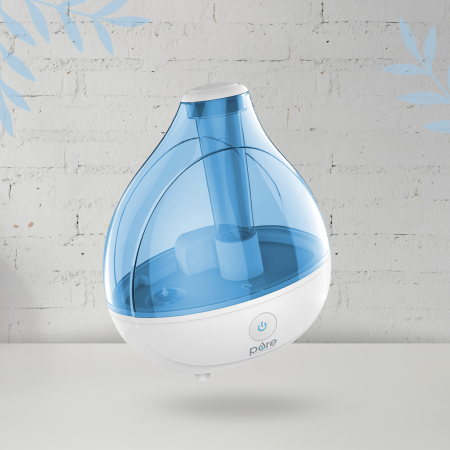
Highlighted features
- 5 liters water holding capacity
- Shot-off automatically when the water level is low or empty
- Comes with a cleaning brush for maintenance
- 16hours run time
- Up to 250 sq ft coverage area
- Features Optional light at night
- A 360-degree rotatable nuzzle.
- AC power adapter.
Pure Enrichment MistAire Ultrasonic Cool Mist Humidifier features the ultrasonic cold mist technology system.
The technology produces mist through ultrasonic vibrations.
Taking cost and efficiency into consideration, the Pure Enrichment MistAire Ultrasonic Cool Mist Humidifier offers value at a considerably low price.
The unit features user-friendly options that allow you to set the speed and direction of the mist.
The 360-degree rotatable nozzle will enable you to choose the path of fog in the room.
However, these allow you to position your humidifier towards your desired plant.
Its 1.5-liter water tank capacity can continuously add moisture to the air for 16hrs.
It is undoubtedly the best option for plants throughout the night hours.
The units’ user-friendly design allows for easy assembly and a hassle-free water refilling process.
However, all these features are subject to damage if not properly maintained.
The humidifier comes with a cleaning brush to help you clean the disk periodically for optimum performance.
- Easy to maintain
- Easy to assemble
- The smooth water refilling process
- Easy to use
- Noiseless
- It is not expensive
- It cannot cover an ample space
- It has a comparably small water tank.
02. Honeywell HCM350W Germ-Free Cool Mist Humidifier
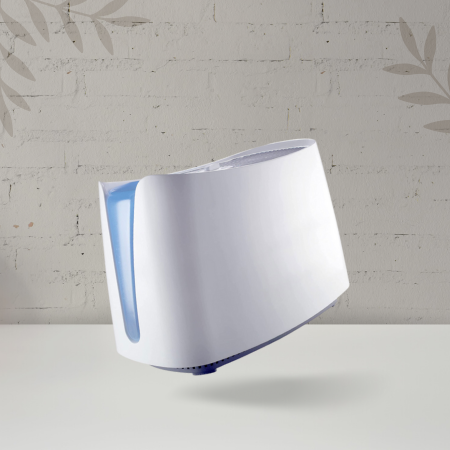
Highlighted features
- 7 liters water tank
- Up to 24hour run time on low
- Features UV technology
- Features a humidity monitor
The Honeywell Germ-Free Cool Mist Humidifier uses evaporative technology. This type of humidifier regulates itself naturally. With this technology, it is impossible to over humidifier.
One of the stands out features of this humidifier is its UV technology that helps kill up to 99.9% of bacterium in the tank water.
With its UV technology, your plant will have protection from bacterial infections.
With the unit’s wide tank opening, filling and cleaning of the tank are easy and convenient. The 3.7ltrs tank offers complete 24hr coverage for your plants.
Although the unit features an evaporative technology that regulates itself, the device is designed with options to adjust the speed of the humidifier to suit the plant’s needs.
It also features a humidity monitor that shows relative humidity and temperature.
- It is easy to handle
- You can clean it easily.
- It is easy to refill
- Offers germ protection
- There is a need to replace the filter for optimum performance
- The fan generates little noise.
03. Vicks Warm Mist Humidifier
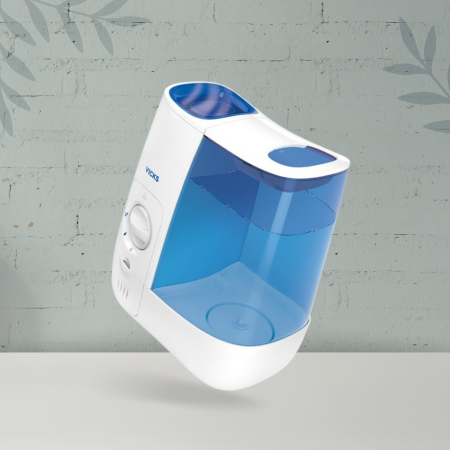
Highlighted features
- Automated shut-off unit when empty
- It features a 3.7ltr water tank
- Up to 12hrs run time
- It operates without a filter
- It features a translucent water tank to help monitor the water level.
Vick Warm Mist Humidifier uses a simple technique to boil the water in the tank to steam vapor, this vapor, in turn, mixes with air in the cooling chamber and sends off warm mist into the surrounding air.
The boiling process gives off bacteria-free air to the environment, helping your plant to stay healthy.
The unit does not use any filters, so there is no need to worry about changing filters.
Its large 3.7ltr tank is another feature that makes it perfect for plants as it can run for 12hr before the next refill.
This unit comes at a considerably low price compared to the quality it offers.
The humidifier is quite easy to maintain and clean as it is easy to assemble and uses no filter.
- The unit is easy to maintain
- It’s easy to use
- It is almost noiseless
- It needs thorough and regular cleaning to keep it working optimally.
04. TaoTronics Cool Mist Humidifier
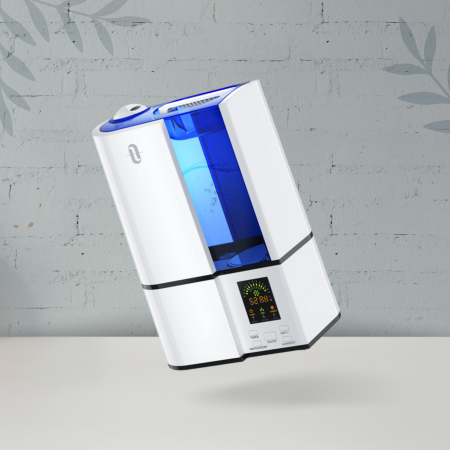
Highlighted features
- It features a massive 4L water tank
- Up to 30hrs run time
- Automated shut-off ability
- Comes with a humidistat
- Features a Microporous Filter Cartridge
- It comes with one cleaning brush for maintenance.
- Informative led display
An ultrasonic cold mist system powers the TaoTronics Cool Mist Humidifier.
It comes highly recommended for your plants as the unit features a massive 4ltr water tank with the ability to run for up to 30hrs.
With its automatic humidity monitoring system, you don’t have to worry about your room humidity level.
The system will regulate the relative humidity level generate ideal humidity for your plants.
The humidifier comes fully equipped with a 360-degree nozzle that provides you with options on the direction to humidify. The 360-degree nozzle allows you to focus the nozzle to your garden.
It can cover 100-320 sq.ft of the area, making it ideal for your farm.
Its automatic shut-off ability helps to improve the safety of using the device.
The humidifier comes with Microporous cartridge filters, which give out microbes and odor-free vapor.
- It is easy to use
- It is easy to assemble
- It is easy to clean and refill
- It is noiseless
- Filter replacement is recommended every 4-6months.
05. LEVOIT Ultrasonic Air Humidifier

Highlighted features
- It features a 6Ltr water tank capacity.
- It has up to 36hrs running time
- It features an aroma box
- Automatic power off when empty
- It features a cleaning brush and a remote-controlled unit
It comes with a unique feature of warm and cold mist built into one unit. With just a button click, you can choose between a cold or a warm cloud.
The unit comes with a remote controller to make controlling more convenient even from a distance.
The humidifier comes with a full tank opening that makes cleaning much easier and more comfortable.
With this humidifier, you can be sure of cutting costs on part replacements, as it is designed to operate without a filter.
If you are looking for a single humidifier that can cover your entire farmhouse, then the Levoit warm and cold humidifier comes highly recommended.
- It is easy to clean
- It is safe for use
- Near noiseless operation
- It covers a larger area
- It is a bit expensive
06. Pure Enrichment MistAire XL Cool Mist Humidifier
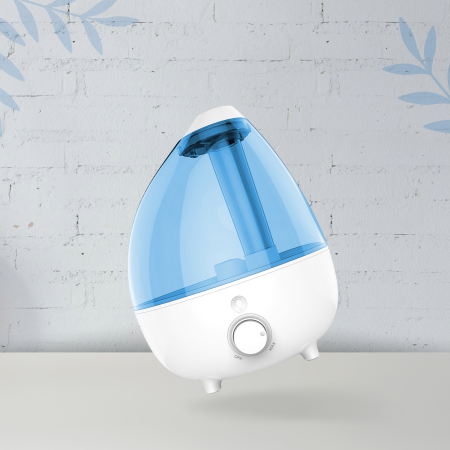
Highlighted features
- 7ltr water tank capacity
- Up to 24hrs run time
- It has an optional night light
- Automatic shut-off function
- Disk cleaning brush
This version of the pure enrichment MistAire cool modifier comes with an improved water tank capacity and run-time.
The 3.7ltr water tank can continuously humidify a 500sq/ft area for 10- 24 hours.
The large tank offers relief from regular refilling of the tank as one filling can last a whole day.
The unit is designed to allow for preference settings like moisture output levels.
It also offers three soothing colors to choose from in other to make a relaxing environment.
Worthy of mention is the double nuzzle system in the unit that allows you to choose the direction of the mist. The nozzles can rotate 360-degree.
The humidifier automatically switches off for safety if the water dries up in the tank or if the container is removed.
- It is easy to assemble
- It is easy to use
- It is noiseless
- A bit expensive
07. TaoTronics Cool Mist Humidifiers for Babies
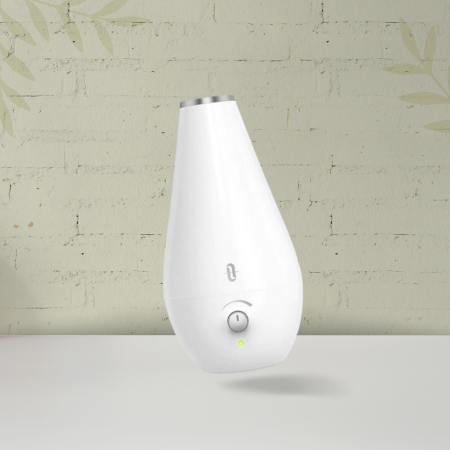
Highlighted features
- It has a Portable size
- It has a filterless design
- It features an automatic shut-off function
- It has a 1.8ltr water tank
- It has a dial knob to regulate humidity.
- 360-degree rotatable nozzle
The humidifier is designed to humidify a smaller space compared to larger Taotronic brands. Its vertical oval shape can fit in a little space.
The ultrasonic humidifier comes fully equipped with a 360-degree rotatable nozzle that allows for all-round humidification.
This humidifier is ideal for you if you are hoping to humidify your plant without taking up too much space in the room.
Its sleek and slim design allows for secure handling and refilling. It is also equipped with the auto turn-off function for safety.
- It is easy to use
- It is easy to handle and maintain as it requires no filter change.
- Hushed operation
- The water tank size is small
- It is not suitable for a large area
08. LEVOIT Cool Mist Humidifier
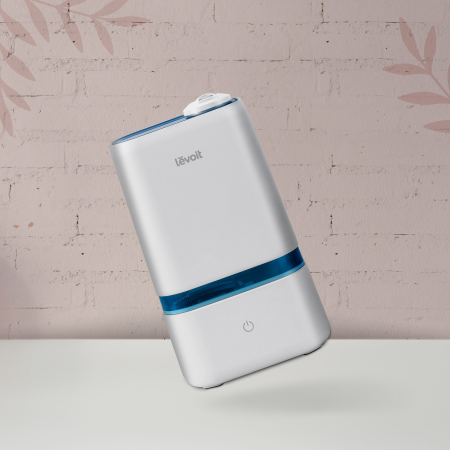
Highlighted features
- 5L water tank capacity
- Up to 40hrs run-time
- Automatic shut-off feature
- Tranquil operation
The humidifier is equipped with user-friendly options. With a touch, you can control the level of mist to your plant’s preference. You could either go low, medium, or high.
When set to its highest, the humidifier gives out up to 300ml/hr of mist, therefore, covering an ample space in a short time.
With a water tank opening of 3 In / 7. 62 cm wide, cleaning the unit is very easy and convenient.
The humidifier is designed without filter, so you will not spend money replacing parts.
It is also equipped with the popular automatic turn-off function when the tank is empty for safety.
The unit will surely offer you excellent value for your money.
- It is comparably cheap.
- It is effortless to clean and refill.
- It provides coverage to a large area.
- It operates noiselessly
- It has a large water tank.
09. Pure Guardian H965AR Ultrasonic Cool Mist Humidifier
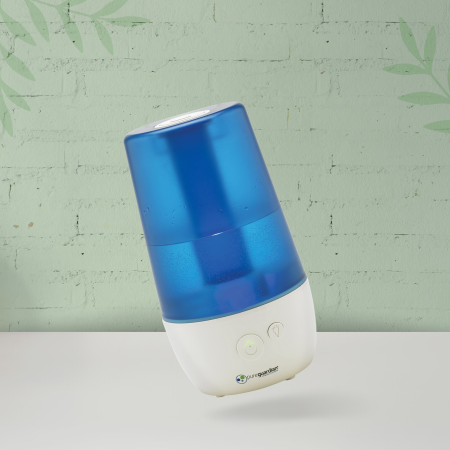
Highlighted features
- 7L water tank capacity
- Up to 70hrs run time
- Filterless design
- Automatic turn-off function
- It has an Optional Night Light
- Water tank surface covered with clean silver protection.
This unit is the best choice for a medium-sized room. It is fully equipped with a 3.7L water tank to cater for up to 320 sq.ft room size.
With this humidifier, you do not need to bother about mold and mildew growth on the water tank surface.
The water tank surface is fully protected with a silver clean protection technology.
The Pure Guardian H965AR Ultrasonic Cool Mist Humidifier uses ultrasonic technology, which helps the unit operate almost noiseless.
The mist speed can be adjusted to three different levels of high, medium, and low.
When operated on a low rate, the humidifier can run for 70 hours without the need for a refill.
- It is not expensive
- It does not use filters
- It has a large water tank
- It is easy to clean and refill
- Cleaning brush not included
10. iTvanila cold mist Humidifier
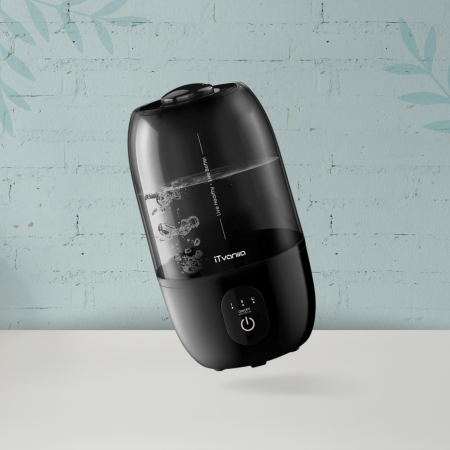
Highlighted features
- 5L water tank capacity
- Up to 28hrs run -time
- Automatic shut-off function
- Filterless design
- Portable design
- 360-degree nuzzle
With its 2.7L water tank, you won't have to refill the tank too often as it lasts up to 20hrs.
The unit comes with an adjustable knob that allows you to set the amount of fog to your desired preference.
One of the significant features of the iTvanila cold mist humidifier is its elegant filterless design.
The automatic shut-off function helps it shot down when the tank is empty to avoid a hazard.
- The humidifier is not expensive
- It is easy to clean and refill
- It does not take up too much room space as it is portable.
- It is noiseless
- Cleaning brush not included
Buying Considerations of The Best Humidifier For Plants
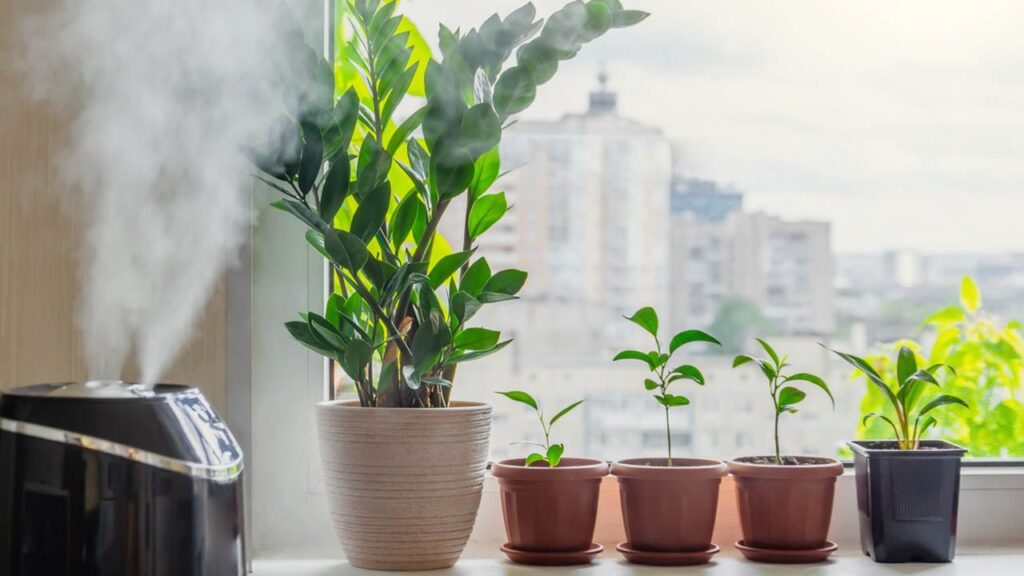
In a bid to purchase a perfect product, there are always a few considerations to make to get your required result.
However, to choose the best humidifier for your plants, here are a few considerations to make:
01. Budget
You don't have to break the bank to get a good humidifier. There are several good-quality humidifiers at a comparably low price.
Your budget might also inform your choice of buying a filterless humidifier to avoid parts replacement costs. I recommend the iTvanila cold mist Humidifier for a low budget size.
Size of the area you want to humidify
The Pure Enrichment MistAire XL Ultrasonic Cool Mist Humidifier comes highly recommended as it can cover a massive 500 sq.ft.
02. Run Time
Another vital feature to look out for when selecting a humidifier is its maximum run time. You should use a humidifier with at least 12 hours.
The humidifier having up to 12 hours run time will allow you to make refills only twice a day.
However, units with a higher runtime are much better. The Pure Guardian H965AR Ultrasonic Cool Mist Humidifier comes highly recommended as it has a massive 70 hours runtime.
03. Noise level
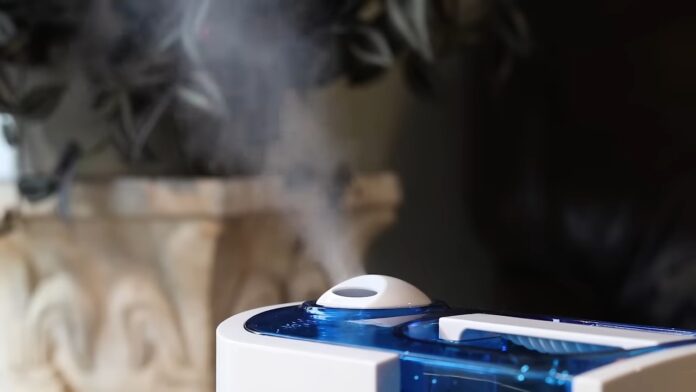
It is quite preferable to choose a humidifier that will not bother you with noise while running.
To meet this need, all types of ultrasonic plant humidifiers come highly recommended as they operate quietly.
04. Ease of maintenance
The unit should be easy to maintain. The design should be quite easy to disassemble and assembly.
One of the most comfortable groups to sustain is the LEVOIT Cool Mist Humidifier As it comes with a large tank opening that ease cleaning.
05. Anti-Bacteria
06. Durability and Safety
Before purchasing any product, the strength and security of the product are a few of the factors that we consider.
However, before choosing a humidifier, make sure it is equipped with the automatic turn-off function when the tank is empty to avoid a fire hazard.
Make sure the product you are about to purchase is durable, so you won't have to spend extra cash replacing parts.
Fortunately, most of the humidifiers in the market are equipped with the automatic turn-off function, which makes it less of a problem.
What Types of humidifiers are available?
Humidifiers come in different types based on the mechanism they work on.
- Evaporative humidifier
- Ultrasonic humidifier
- Warm mist humidifier
Evaporative humidifier
Evaporative humidifiers are one of the most common humidifiers. It's operating mechanism is quite easy and effective. The two major components that make the unit are a filter and a fan.
The fan blows air into the device, over a water-soaked filter to take-up water. The internal fan then blows the water-saturated air out into the open area.
However, the higher the relative humidity in the air, the harder it is for the wind to absorb water from the wick.
This simple principle makes the evaporative humidifier more reliable, as it is self-regulating.
Ultrasonic Humidifier
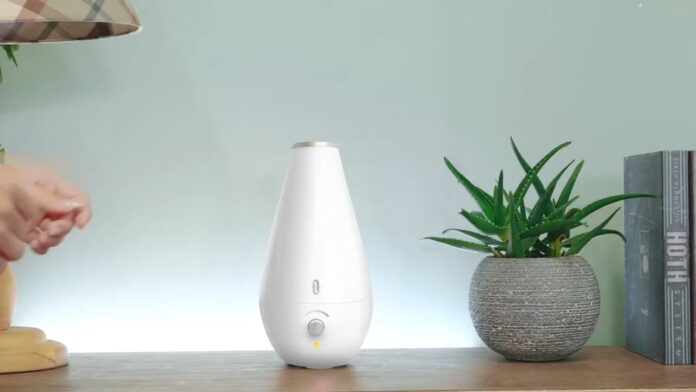
This type of humidifier uses ultrasonic vibration to induce a faster evaporation rate in the water tank. The super-fine water droplets are produced by ultrasonic vibration. The unit does not use any filter or fan.
The unit operates very quietly, and it is effortless to maintain.
Warm mist humidifier
The working mechanism of a warm mist humidifier is pretty simple. The water in the reservoir is boiled, and vapor is released into the area.
The unit is less expensive compared to other types of humidifiers. The warm mist humidifier produces very clean vapor because the boiling process traps impurities.
Which is better, cold or warm mist?
You don't have to worry about the mist that your humidifier is putting out. Be it cold or warm; they both perform the same work of humidifying and purifying the air around your plant.
Although many people prefer the cold mist humidifier because it uses less energy and has a longer run-time, the warm mist humidifier has its benefits.
The warm mist humidifier purifies the air around your plant.
Impeller humidifiers turn the water in the unit into vapor with a disk that spins at high speed. The mist rises and fills the air.
How to Maintain Your Plant Humidifier
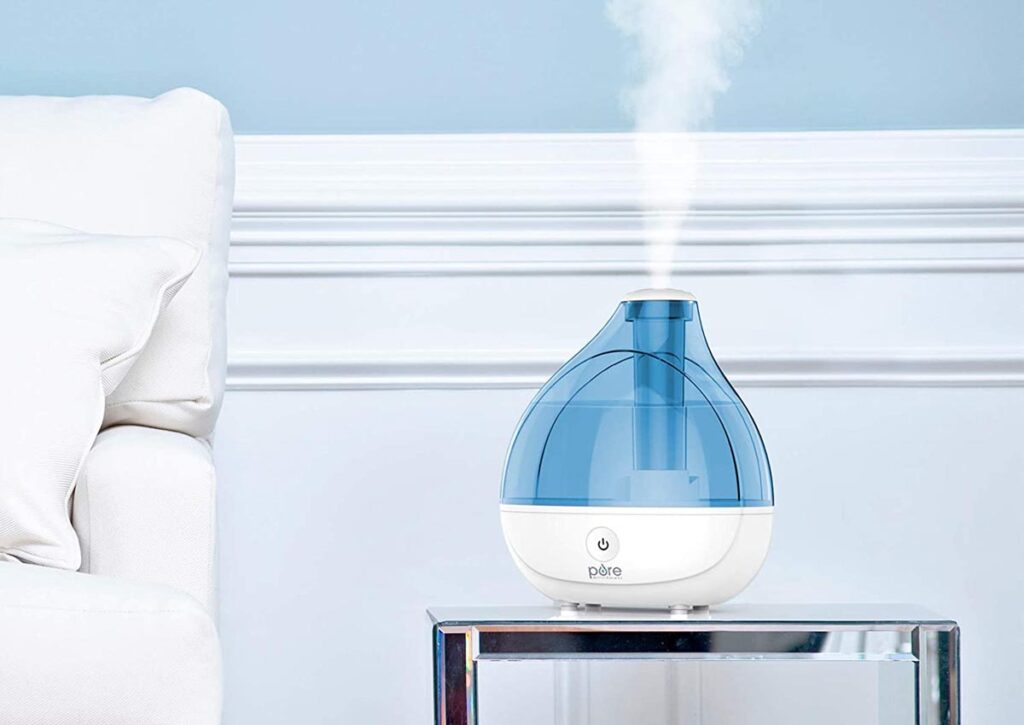
The humidifier, just like every other piece of equipment, requires maintenance for it to function well. Here are a few steps to keep your humidifier clean and working.
Give it a deep clean weekly
It is recommendable to clean the entire unit thoroughly at least once a week.
An in-depth wash will help you get rid of mold and mineral build-ups in the humidifier that can be harmful to your plants.
Clean out the water tank before refilling
Always rinse out the remaining water in the tank before refilling it. This will terminate any bacterial growth in the tank.
Replace filter
Clean and dry before packing
When you notice that the humidity level is quite fair and you have no need for your humidifier, it is good to clean and dry it before storage.
How to Wash a Humidifier
Below is a step by step guide on how to properly clean your humidifier
First step
Before any other thing, safely unplug the unit from the energy source. Carefully disassemble the units into its various parts, depending on the model.
Empty the water tank. If your humidifier has a filter, take it out and wash it with running water.
Second step
Soak every washable part, including the filter into a bowl of white vinegar for least 35 minutes.
Also, pour the vinegar into the base and allow it to soak to breakdown mineral build-ups. Use a soft brush to scrub thoroughly to remove any stuck-on dirt.
To disinfect your water tank, you can soak with bleach for 30 mins, or you can alternatively use 3% hydrogen peroxide in place of bleach.
One teaspoon of bleach to a gallon of water will thoroughly disinfect the tank in 30 minutes.
Third step
Thoroughly rinse every single part with tap water. You can take a few minutes out to do this properly.
Put all the pieces on a clean surface to air dry. The air drying will help remove every residual aroma.
Fourth step
It is time to assemble back all properly and fill the water tank with water. Plug it back to the energy source and put it on, and enjoy clean and refreshing air.
What is humidity?
Humidity is not visible to the physical eyes, but it is all around you. It is the amount of water present in the air in the form of water vapor.
However, water vapor is simply water in its gaseous state. This factor is mostly dependent on temperature.
A typical example is a vapor that goes off your kettle when you boil water.
Furthermore, there are a few parameters that are used to determine the level of humidity in the air.
- Relative humidity: this is the amount of water in the air compared to the amount it can hold at a particular temperature. For example, the humidity of a place is 85%, and the temperature is 60f, it means the air is 85% saturated at that point. This factor varies with temperature. As the temperature rises, the relative humidity drops and vice versa.
- Dew point: is the temperature sufficient enough to cool the air to the point of saturation. Below the dew point, water vapor condenses and drops on leaves. At a few degrees above the dew point, the humidity is high.
How does humidity affect your plant?
Talking about how humidity affects plants might sound technical. But relax, I'll knock the technical away in a pretty fun way; you can call it a 'technical knockout.'
Humidity is one of the most challenging environmental factors to control. The excess of this factor, as well as its deficiency, creates a problem for the plant.
Plants, unlike animals, that breath, and transpire through the opening and closing of their stomata(pores on the leaves).
However, transpiration is the process by which a plant takes up water through its roots and evaporates it through the stomata in the form of water vapor.
Transpiration is one of the characteristics of plants that are mostly affected by humidity.
When there is low humidity, the plant absorbs more water from the soil(medium) and gives it up through the stomata much faster.
The increased rate of transpiration will result in wilting and possible plant death if the humidity stays the same.
High humidity is also not the solution to the problem faced as a result of low humidity.
When the humidity is too high, the plants take up less water from the soil or medium, thereby causing malnutrition.
Another essential characteristic of the plant that is also affected by the level of moisture in the air is photosynthesis.
Photosynthesis is simply the process through which plants make glucose from carbon(iv) oxide and water in the presence of sunlight.
Photosynthesis can only be active when more stomata are open to allow more Carbon IV Oxide intake.
Therefore, when there are average humidity and high temperature, the stomata stays open, and photosynthesis occurs.
But when the air is too dry, the stomata close to avoid excessive water loss.
When the stomata are closed, photosynthesis cannot occur. Reduced photosynthesis will affect your plant growth and productively.
What are the Symptoms of Poor Humidity in the plant?
Inadequate humidity is dependent on the plant's needs, as some plants do better in a humidity environment while others do not.
Here are a few symptoms to notice if the humidity is too high for your plant
Symptoms of high humidity
- There will be nutrient deficiency as a result of a low intake of water from the soil or medium.
- The plant will present with increased foller disease
- There will be increased root disease
- There will be soft growth on the leaves.
- The plant will present with oedema. Etc
Symptoms of low humidity
- The plant will wilt.
- The leaves will present with dry tip burn.
- The leaves will curl-up.
- The leaves size will get smaller.
- The plant will be stunted.
- The plant will be infested with spider mites. Etc
How to Increase Humidity
Plants have varying humidity needs. Some plants grow well in a high humidity environment, and others need lower humidity.
That is why two plants can perform differently in the same situation.
It is imperative to know the humidity need of your plants in other not to affect your plant negatively.
However, house plants generally thrive at a 40-60% humidity level since most of them originated from humid regions.
Choosing a location
Different locations have different levels of humidity; for example, pond sides, water fountains, and waterfalls are associated with high humidity.
Therefore in other not to face humidity problems, you can select just the right plant for the right place. You can as well move your plant to the bathroom.
Grouping your plants
Grouping your plants can naturally increase the humidity in the room.
As plants transpire, they send out moisture, which can help regulate humidity. Also, placing a dish of water, their center can go a long way in increasing humidity.
Use Pebble trays
Pebble trays are simply a shallow tray that you put pebbles and water inside and place your plant pot on it. This can increase the humidity level in a small area.
Make sure the plant pot does not rest directly on the water to avoid root rots.
Do not cover the pebbles with water but rather cover about half of the pebble height.
One of the downsides of using the pebble tray is the continuous need for cleaning the pebble trays and replacing the water to avoid contamination.
Also, try to occasionally wash the pebbles to avoid the growth of algae on it.
Using a mister
Another efficient way of increasing humidity around a plant is through misting the plant. It is preferable to use a sprayer with a very fine mist and spray moderately in order not to soak the plant.
It is essential to understand that soaking the plant will expose the plant to disease.
Avoid misting plants with hairy leaves, like the African violets, Stretocarpella, purple heart, and other such plants.
The hairy leaves tend to retain water, which gives rise to disease and unpleasant spots on the leaves.
Misting effects are always temporary, so to get an optimum result, you need to shower up to 4 times every day.
Bathing your plant
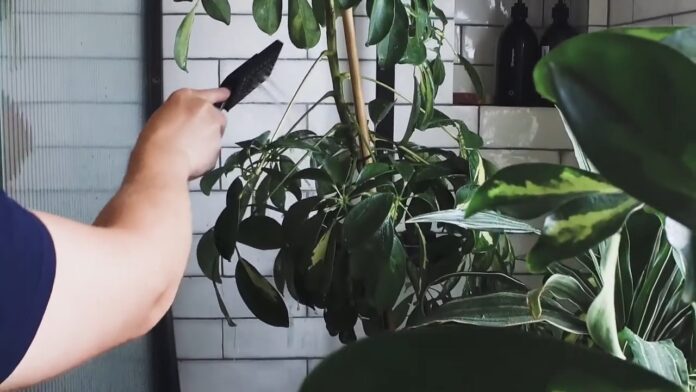
It is true that plants also enjoy a proper shower too. Always bath your plants, especially during the winter.
These will give the plant extra moisture and also clean the leaves of dust.
Use of Humidifier
A good humidifier can help you maintain the level of humidity wanted by your plant. A humidify can raise the humidity of a vast area, depending on its size.
Using a Terrarium
You may need a terrarium for your plant if all the other steps do not satisfy its humidity needs. A terrarium is a closed-up environment that inhabits some soil, some small plants.
The system mimics the natural water cycle as the moisture absorbed and released by the plant condenses on the wall of the terrarium and falls back to the growing medium.
This environment is ideal for smaller plants with high temperature and humidity needs.
How do you raise humidity using a humidifier for plants?
Raising humidity with a humidifier is as easy as it sounds.
After getting a humidifier of your choice, read through the user manual, and follow the instructions, which are usually simple.
Put the unit at a preferred location and keep it on a flat surface. Fill the water tank, turn it on, and regulate to your preference. The humidifier does its job by adding moisture to the air.
FAQ
Do plants like humidifiers?
It is not strange for a plant to do well around humidifiers. Humidity plays a vital role in the growth and survival of any plant. Therefore, using a humidifier correctly for your plant only benefits your plant.
What is a humidifier and why do I need one for a plant grow room?
A humidifier is a device that adds moisture to the air. In plants grow room, a humidifier is needed to increase the humidity levels, which is essential for healthy plant growth.
Plants require a specific level of humidity to thrive, and a humidifier can help maintain the optimal level of moisture in the air.
What type of humidifier is best for a plant to grow room?
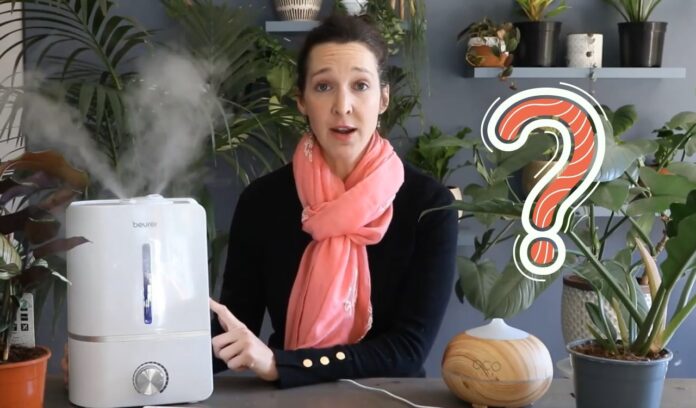
There are two main types of humidifiers: cool mist and warm mist. For a plants grow room, a cool mist humidifier is usually recommended because it does not produce heat, which can affect the temperature in the grow room.
Additionally, cool mist humidifiers are generally more energy-efficient and easier to clean.
How do I determine the ideal humidity level for my plants grow room?
The ideal humidity level for a plants grow room varies depending on the type of plants you are growing.
Generally, most plants thrive in a humidity level between 40% and 60%. However, it's important to research the specific needs of your plants to determine the ideal humidity level.
How often should I run my humidifier in plants grow room?
The frequency of use for your humidifier will depend on several factors, such as the size of your grow room and the specific needs of your plants.
In general, it's recommended to run the humidifier continuously, or at least for several hours per day, to maintain a consistent humidity level.
How do I maintain my humidifier for optimal performance?
To ensure optimal performance, it's important to clean and maintain your humidifier regularly. Follow the manufacturer's instructions for cleaning and disinfecting the unit, and replace the filter as needed.
Additionally, monitor the humidity levels in your grow room regularly to ensure that the humidifier is functioning properly.
Can a humidifier be harmful to plants if used improperly?
Yes, if a humidifier is not used properly, it can be harmful to plants. Too much humidity can lead to mold growth, root rot, and other issues, while too little humidity can cause dryness and damage to the plants.
It's important to monitor the humidity levels and use the humidifier properly to ensure that it is benefiting the plants and not causing harm.
How do I choose the right size humidifier for my plants grow room?
The size of the humidifier you need will depend on the size of your grow room and the specific needs of your plants.
A general rule of thumb is to choose a humidifier that is capable of producing enough mist to raise the humidity level by 10-15%. Additionally, consider the coverage area of the humidifier and ensure that it is sufficient for your grow room size.
Conclusion
For your plant to be healthy, it needs to evaporate water through its stomata. The process is called transpiration, as we earlier discussed.
Think of transpiration as breathing in humans, as it is through this process that plants take-in Carbon iv oxide.
Without the stomata staying open, transpiration and photosynthesis cannot take place.
However, for the stomata to stay open, the humidity level around the plant is a significant player.
You may watch your beloved plant wilt and probably die because of either high or low humidity.
Every plant has its own humidity needs. Several studies have proven that the thinner the plant, the higher its humidity needs.
However, leaves with thick, leathery, or hairy leaves often survive even in areas of very low humidity.
Fortunately, with the use of a simple humidifier, you can increase the humidity around your plant.
Humidifiers are perfect for house plants as well as greenhouses. Humidifiers come in different sizes and capacities that can cater to your needs.
We have reviewed 10 top brands of humidifiers that are best for you, leverage the market, and humidify your plants today.

